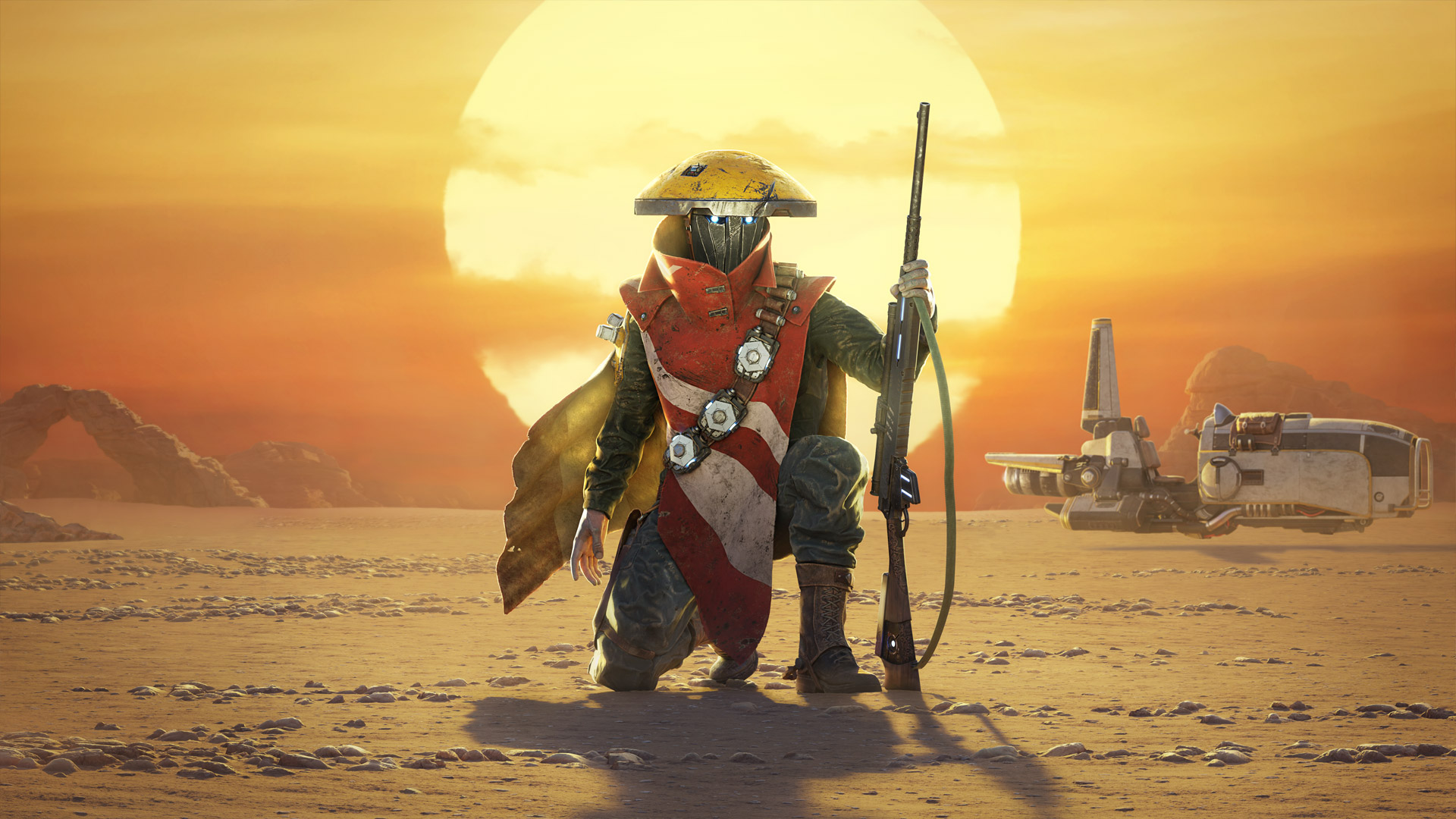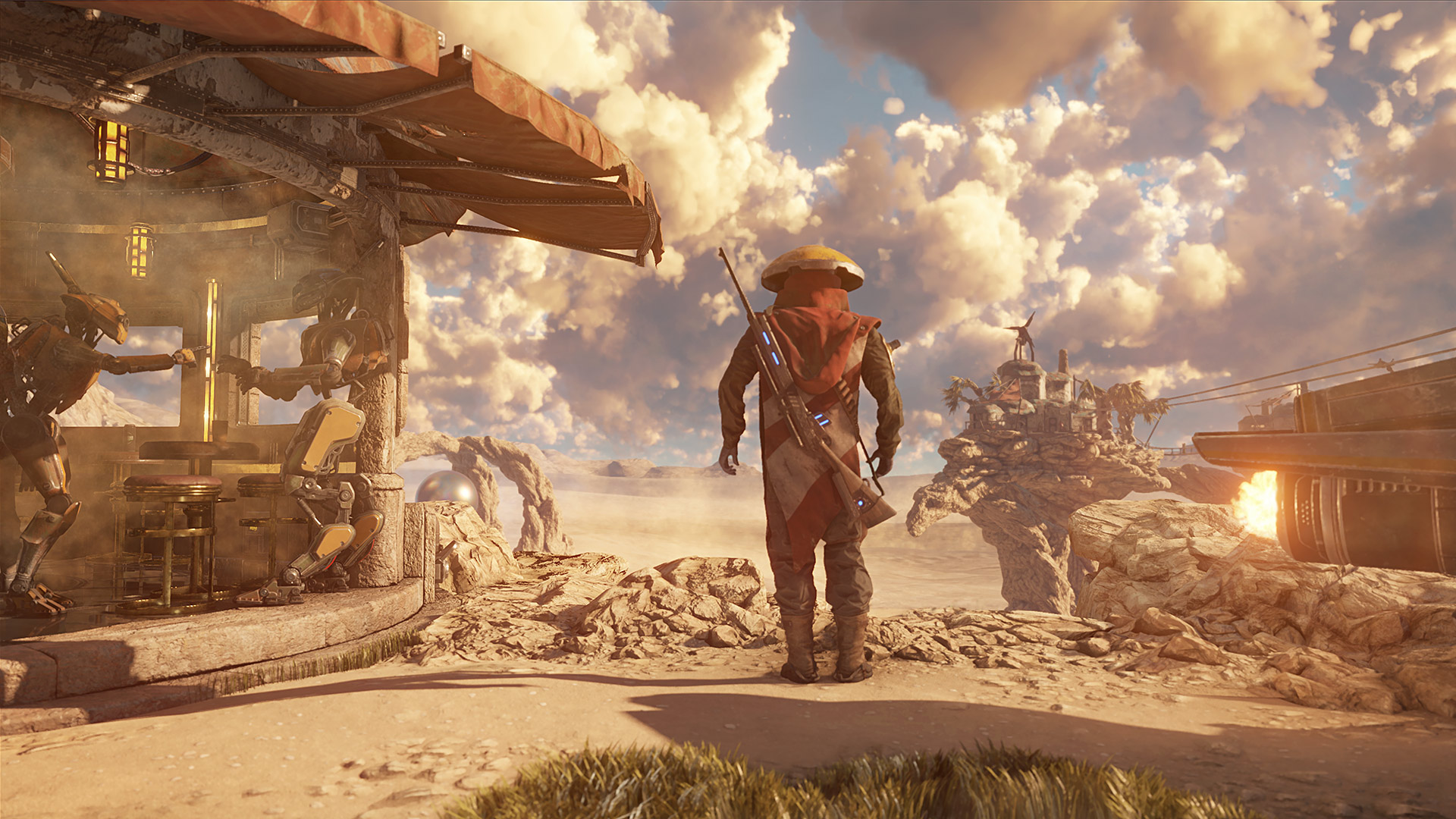3DMark's Time Spy successor, Steel Nomad, makes Nvidia's RTX 4090 work hard, without ray tracing
This new benchmark brings all of Nvidia and AMD's modern GPUs to their knees.

Steel Nomad, 3DMark's latest GPU benchmark, is the official successor of 3DMark popular Time Spy tool, which debuted eight years ago. PCGamesHardware benchmarked Steel Nomad and discovered it's a worthy successor to Time Spy, making even Nvidia's RTX 4090 struggle a bit.
Steel Nomad is explicitly designed to push the limits of the latest GPU hardware. 3DMark says that the newest generation of Nvidia and AMD GPU hardware is so fast that it has reached the limits of what Time Spy is capable of. Steel Nomad rectifies this issue by significantly increasing the GPU graphics workload.

The new benchmark comes in two formats: a vanilla Steel Nomad version and Steel Nomad Light, a much lighter counterpart aimed at lightweight devices with integrated graphics and smartphones. The hallmark of Steel Nomad is its rasterized-only graphics, which sets it apart from 3DMark's other ray-traced benchmarks like Speed Way. This makes it an excellent tool for comparing rasterized GPU performance, which is still a legitimate performance category, even as games continue to adopt ray-tracing graphics. Many modern games still forgo RT graphics, such as Sony's latest PC port, Horizon: Forbidden West.
The fully-fledged version of Steel Nomad utilizes a hefty 4K render resolution, combined with volumetric lighting, volumetric cloud calculations, and Intel's XeGTAO ambient occlusion. According to pictures, the world in Steel Nomad appears to be incredibly large, which will put even more stress on the GPU.
It might seem silly that Steel Nomad lacks ray-tracing capabilities, but that isn't the intended role of the new benchmark. Steel Nomad is explicitly designed to benchmark rasterized GPU performance, which is the same role that Time Spy fulfilled. 3DMark has other ray-tracing-specific benchmarks that address RT GPU performance benchmarking.
Performance
Steel Nomad does not disappoint in its ability to bring GPUs to their knees. PCGamesHardware recorded a maximum frame rate of just 112 on Nvidia's RTX 4090 flagship, with a manual overclock of 3GHz.
Lower-end GPUs of course do much worse: The Radeon RX 7900 XTX achieves just 73 FPS and Nvidia's RTX 4080 Super 72 FPS. Both Nvidia's RTX 4070 and AMD's RX 7800 XT achieve just 41 FPS, and both brands' lowest-end current-generation products, the RTX 4060 and RX 7600, dip below 25 FPS on the benchmark.
Stay On the Cutting Edge: Get the Tom's Hardware Newsletter
Get Tom's Hardware's best news and in-depth reviews, straight to your inbox.
The new Steel Nomad benchmark will officially be released tomorrow (May 21st) and will be available for free for all 3DMark users (it will be bundled in the free 3DMark Basic Edition).

Aaron Klotz is a contributing writer for Tom’s Hardware, covering news related to computer hardware such as CPUs, and graphics cards.
-
There are few more options to test with Nomad as outlined below. Not direct benchmarks though. You can add these to the article if you wish: :)Reply
Sub Tests:
The Steel Nomad Stress Test"is designed to assess the gaming performance stability of PCs over extended periods. Conducted over a 20-minute duration, this test is structured to allow the device's temperature to stabilize, mirroring a typical gaming session. This approach helps in identifying any performance fluctuations attributable to thermal conditions. Users are advised to avoid running any prior benchmarks or games immediately before initiating the stress test to prevent residual heat from influencing the results.
Upon completing the stress test, the software provides a comparative analysis between the lowest and highest performance scores recorded during the session. Additionally, it supplies data on how the performance adjusts over time, highlighting any necessary performance throttling to maintain safe operational temperatures."
Explorer Mode,"formerly known as Interactive Mode, offers users the ability to navigate through the benchmark scene freely. This mode allows for adjustments in rendering settings and post-processing modifications, facilitating users in optimizing visuals or capturing high-quality screenshots. It also includes elements that commemorate the various benchmarks developed over the past 25 years."
VS. Mode"provides a competitive benchmarking platform where users can compare their Steel Nomad results with those from friends, entries from the 3DMark Hall of Fame, or systems equipped with the latest gaming hardware. This feature is particularly useful for tracking the performance changes of a gaming PC over time, offering a dynamic way to measure and understand hardware efficiency in a comparative context."
https://www.guru3d.com/data/publish/222/ade85404e3701095fa694a6e0b552eec858546/steel_nomad_explorer_mode_screenshot_1.webp
https://www.guru3d.com/data/publish/222/ade85404e3701095fa694a6e0b552eec858546/steel_nomad_explorer_mode_screenshot_2.webp
https://www.guru3d.com/data/publish/222/ade85404e3701095fa694a6e0b552eec858546/steel_nomad_explorer_mode_screenshot_3.webp -
ezst036 Hopefully they get with the times and work to wide-release a Linux port.Reply
Not a CLI version like they have now of their current 3DMark, but only given to "select partners" either. -
Colif Reply
I thought my knees would be lowerAdmin said:The benchmarking tool features more demanding graphics that bring the latest generation of GPUs to their knees.
4090 can get about 90fps but I realised I wouldn't be at top. I was just curious what I would get. -
Colif its strictly the GPU, as someone I know with a 7900XT and a 7800X3D got a similar score to what I do. So its not affected by CPU choice... at least mine isn't holding it back anyway.Reply